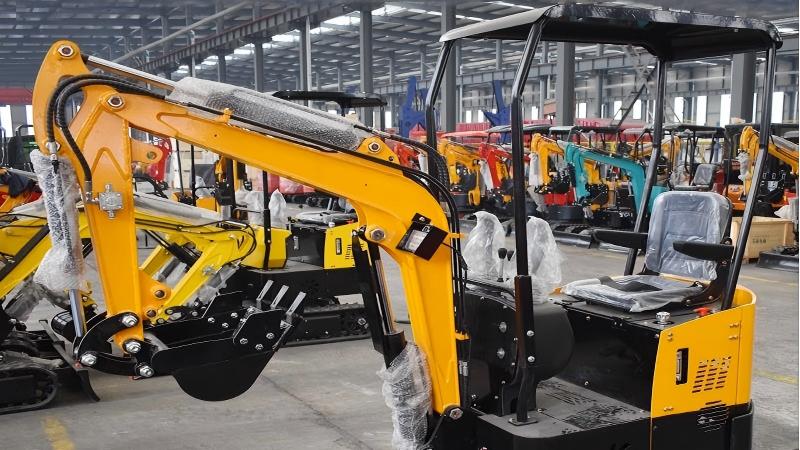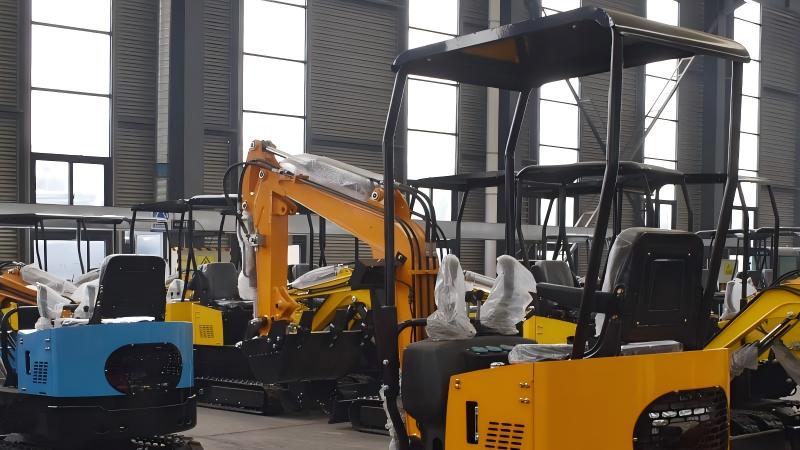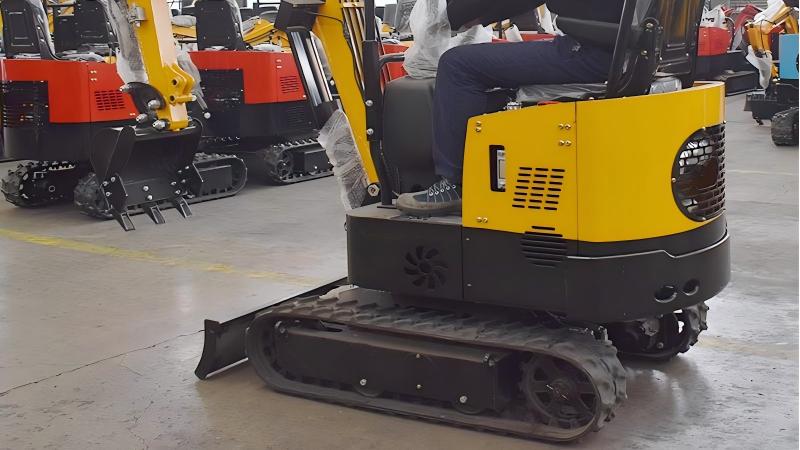Mini excavators have become an essential piece of equipment across a wide range of industries — from landscaping and utility trenching to small-scale construction and demolition. Their compact size, ease of transport, and versatile functionality make them ideal for tight job sites and tasks that require precision. A frequent and critical question among equipment operators and project planners is: How deep can a mini excavator dig?
The answer depends on several key factors, including the model of the mini excavator, the length of the boom and arm, the design of the undercarriage, and the type of attachment being used. In this article, we’ll explore the technical aspects that influence digging depth, typical capabilities across different models, and tips for selecting the right machine for your job site.
What Defines a Mini Excavator?
Before discussing digging depth, it’s important to define what constitutes a "mini" excavator. Generally, a mini excavator (also known as a compact excavator) is defined as a machine with an operating weight under 10,000 lbs (about 4.5 metric tons).
Most mini excavators fall into the 1 to 5-ton range and are designed for work in confined spaces. They typically feature a boom, arm (stick), bucket, and a rotating cab. Some models offer zero- or reduced-tail swing, making them especially effective in urban or indoor environments.
Key Factors That Influence Digging Depth
While model specifications provide a basic guideline, actual performance on-site can vary due to:
Boom and Arm Configuration
The length and design of the boom and arm (also known as dipper or stick) directly determine how far the bucket can reach below ground level. Many mini excavators offer:
Standard arm – balances reach and lifting force.
Long arm – extends dig depth by 6–12 inches (15–30 cm), often with reduced bucket breakout force.
Undercarriage and Stability
The width and design of the undercarriage affect the machine’s balance when digging at full depth. Some mini excavators have extendable tracks for greater stability, allowing them to safely reach deeper without tipping risk.
Hydraulic System
Strong and efficient hydraulics are crucial to achieve deeper digs, especially in hard or compacted soil. Hydraulic power affects:
Bucket breakout force
Arm tearout force
Smoothness of operation at full extension
Bucket Type and Size
The bucket’s size and design also influence effective digging depth. A larger or heavier bucket may reduce reach due to weight limitations, while narrow trenching buckets allow for deeper, more precise cuts.
Example Models and Their Digging Capacities
Here are examples of popular mini excavator models and their maximum digging depths:
Bobcat E20 (1.8 ton): 8.5 ft (2.6 m)
Kubota KX018-4 (1.8 ton): 7.9 ft (2.4 m)
Caterpillar 301.8 (1.8 ton): 8.2 ft (2.5 m)
Takeuchi TB235-2 (3.5 ton): 10.7 ft (3.3 m)
Yanmar ViO55-6A (5.5 ton): 12.3 ft (3.75 m)
These numbers can vary slightly depending on long-arm configurations or additional features like offset booms.
Use Cases and Matching Depth Requirements
Understanding your project requirements is essential when selecting the appropriate digging depth:
Utility Trenching
Most water lines, electrical conduit, and irrigation systems are buried between 12 and 48 inches (30–120 cm). Even the smallest micro excavators can handle this.
Sewer and Drainage Work
These systems may require trenches 4–8 feet (1.2–2.4 m) deep, making a 2- to 3-ton excavator a suitable choice.
Basement and Foundation Excavation
While full-scale foundation digging often exceeds mini excavator capacity, small additions or footings up to 10–12 feet (3–3.6 m) can be managed with a larger mini (4–5 ton).
Tree Planting and Landscaping
Root balls of trees can be large and deep — usually under 6 feet. Even 1–2 ton machines are suitable for this task.
Practical Considerations for Maximum Depth
Even if a machine is rated for 10 feet of digging, real-world conditions may reduce its effective reach:
Slope and terrain – Machines on uneven ground may lose depth due to tilt.
Obstructions – Roots, rocks, and utilities may restrict movement.
Operator technique – Skilled operation ensures optimal use of boom and arm range.To dig at or near maximum depth, operators often start by excavating a ramp and gradually stepping down into the trench.
Can You Dig Deeper Than the Machine's Rated Depth?
Technically, yes — but with limitations. Operators can use a combination of sloped access and repositioning to go deeper than the machine’s rated “flat-bottom” depth. However:
Efficiency drops significantly.
Walls must be sloped or supported to prevent collapse.
It's not recommended for large-scale projects.
For consistent deep excavation beyond 12 feet, consider mid-size excavators or backhoes instead.
Conclusion
Mini excavators are powerful tools for confined digging tasks, capable of reaching depths between 5 to 12 feet (1.5–3.6 meters) depending on the model and configuration. While they are not suitable for every deep excavation project, they are invaluable for trenching, landscaping, utility installation, and more.
When planning your job, be sure to match your depth requirements to the excavator’s specifications, taking into account real-world factors such as terrain, soil type, and machine stability. For deeper projects, always assess whether a larger machine or specialized equipment is required.
Post time:Sep-25-2020



